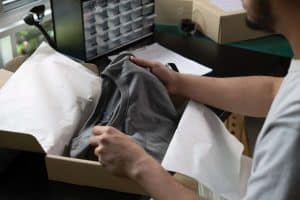In the competitive world of ecommerce, quality product photography can make all the difference in setting your products apart from the competition and driving sales. However, mastering the art of product photography is not an easy task. It requires a combination of technical skill, artistic creativity and a deep understanding of ecommerce platforms and their requirements. In this professional guide, we will explore all aspects of product photography including lighting techniques, composition style, equipment selection as well as tips for post-production to help you produce high-quality images that showcase your products in the best possible light on your ecommerce platform–and ultimately drive e-commerce success through better user engagement & conversion rates!
The Importance of Quality Product Photography for E-commerce Success
Quality product photography can have a significant impact on the success of an ecommerce business. A visually appealing and well-executed product photograph is an essential component in driving consumer decision-making, establishing brand credibility, and ultimately converting visitors into customers. From attracting potential buyers to improving customer engagement levels, high-quality images are crucial to achieving online success.
The technical aspects of product photography require careful consideration including lighting techniques, background selection, resolution quality and composition style. In addition to this understanding of photography technology, there must be a deep understanding of ecommerce platforms such as Amazon or Etsy requirements for image optimization and upload specifications. Furthermore post-production work requires proficient knowledge in editing software applications like Adobe Lightroom, photoshop etc.
Providing clear and detailed images that accurately represent your products is critical in building trust with the consumer. As competition grows tighter within ecommerce spaces only those who can master their approach towards quality product photos will win over consumers attention thereby increasing sales conversions pushing ahead businesses towards growth avenues enhancing long term profitability prospects.
Understanding the Technical Aspects of Product Photography
Product photography is an art form used to showcase and highlight the unique features of a product. To achieve high-quality images, it is crucial to understand the technical aspects of the craft. One key element that can drastically improve your product photos is lighting techniques; proper lighting can bring out details, enhance colors, and create depth in your photographs. Understanding composition style plays another important role in capturing engaging product photographs that effectively convey a message or complement a brand’s tone.
In addition to lighting and composition style, selecting appropriate equipment for photography will impact your final result significantly. Cameras, lenses, tripods or stands are essential tools for attaining clear and detailed shots. Another aspect related to post-production revolves around editing software for retouching where minor alterations such as cropping or adjusting brightness levels might be necessary. Gaining knowledge on these technical elements provides photographers with greater confidence enabling them to deliver constructive results resulting in higher sales conversion rates while standing apart from competitors through visually appealing imagery that genuinely highlights their products’ value-adding qualities..
Choosing the Right Camera and Equipment for Product Photography
When it comes to product photography, choosing the right camera and equipment is crucial for producing high-quality images that will attract potential customers. The first step in this process is determining your budget as camera and lighting equipment can become quite expensive. Once you have established a budget, look for a camera with at least 12-14 megapixels that can shoot in manual mode, as shooting manually allows for greater control over factors such as aperture and shutter speed.
In addition to a quality camera, investing in proper lighting equipment is equally important. Natural light may seem like the best option but it also creates shadows and inconsistencies in color temperature that can make editing difficult later on. Instead consider purchasing artificial lights specifically made for photography or invest in softbox diffusers which will evenly disperse light across your products without creating harsh shadows.
Finally, accessories such as tripods, lens filters and remote triggers are worth considering when building out your product photography setup. Tripods provide stability while photographing so you don’t experience blur; lens filters help adjust white balance or reduce glare; remote triggers ensure sharp focus by allowing hands-free operation of the camera during set-up shots – providing an overall sharper image!
The Different Types of Lighting Techniques for Product Photography
When it comes to product photography, lighting is one of the most important elements to consider. Different types of lighting techniques can create entirely different moods and aesthetics in your images. One common technique is called softbox lighting, which uses large, diffused light sources to create a gentle, shadow-free illumination on the product. This technique works well for showing off small details or textures in the product without any harsh shadows.
Another popular technique is called hard lighting, which features a bright and direct light source that creates bold shadows and contrast in the image. This technique often works well for showcasing products with strong lines or shapes, as it emphasizes their distinctiveness. No matter what type of lighting you choose for your product photoshoots, it’s important to experiment with different setups until you find what suits your specific needs best.
Overall, mastering the art of product photography requires understanding various techniques and how they can impact an image’s overall look and feel. By selecting appropriate lighting techniques that highlight a particular aspect of your product while still maintaining consistent quality across all images throughout your ecommerce website will help set yourself apart from peers- making a great contribution towards e-commerce success!
How to Use Natural Light to Your Advantage in Product Photography
When it comes to product photography, natural light can be a powerful tool in your arsenal. Not only is it free and abundantly available, but it also offers a soft, flattering quality of light that can make your products look stunning. To use natural light effectively, you’ll need to know where and when to find the best light for your shots.
One key advantage of shooting with natural light is that you don’t need any expensive lighting equipment or sophisticated setups. All you need is a clear understanding of how the sun’s intensity and direction changes throughout the day and how you can use this knowledge to craft beautiful compositions in different lighting conditions.
To get started using natural light for product photography, we recommend setting up near windows or other sources of natural illumination indoors during daylight hours. You can also experiment with outdoor shoots in open shade areas which offer softer more even lighting conditions. Pay close attention to the position of both the window/light source relative to your subject as well as changing ambient/background elements such as clouds or shadows cast by nearby buildings/objects.
By mastering these skills and incorporating them into your workflow, you will be able create high-quality images on par with professional photographers – all without breaking the bank on costly gear!
The Art of Styling and Composition in Product Photography
The art of styling and composition in product photography plays a crucial role in elevating the visual appeal of your products. Creating an aesthetically-pleasing image that accurately represents your brand is essential for effective marketing and increasing sales. To achieve this, photographers need to have a sharp eye for detail, understand the importance of lighting, and possess diverse technical skills to create product images with powerful impact.
Striking a balance between creative flair and commercial viability is key when producing high-quality photography suited specifically for ecommerce platforms. This requires attention to detail when composing each shot, selecting props or backgrounds that complement the product’s features while ensuring consistency across all photographs. Moreover, being able to add subtle variations can inject life into the set-up which makes it more engaging not only on e-commerce sites but also on social media as well.
In essence, mastering the art of styling and composition in product photography takes practice combined with skilled technique development. Continuously improving these techniques will ultimately lead to creating captivating visuals that showcase products attractively whilst enhancing brand reputation online through consistent photo collateral across multiple channels such as webpages or social media pages.
The Role of Props and Accessories in Product Photography
When it comes to product photography, props and accessories play a crucial role in enhancing the visual appeal of products. The use of props and accessories can help create a context for the product, allowing customers to visualize how the product would fit into their lifestyle or environment. For example, if photographing a piece of furniture, using decorative items such as pillows or throws can help convey how the furniture would look in a home setting.
In addition to adding context and dimensionality to photographs, the strategic use of props and accessories also helps enhance brand identity. Props that align with brand values or color schemes serve as subtle cues that reinforce brand messaging. A minimalist clothing brand may opt for neutral-colored backgrounds with simple props while an artisanal jewelry company may choose more intricate settings.
However, it is important not to overdo it when using props and accessories since they should never distract from what’s being advertised: the product itself. Ultimately, striking a balance between creating an aesthetically pleasing image while still highlighting the main focus – your product – will lead to successful photoshoots for ecommerce success!
Tips for Shooting Different Types of Products
When it comes to product photography, understanding the specific requirements of different types of products is essential. For example, shooting jewelry requires a careful attention to detail, such as capturing reflections and sparkle. Clothing and textiles may require models or mannequins to showcase their fit and style. Food photography often involves styling the dish with props and lighting in order to make it look appetizing.
Another important aspect of successful product photography is lighting. Depending on the type of product being shot, different lighting techniques may be required to highlight its unique features. For example, low-key lighting can create dramatic shadows for a more moody atmosphere while high-key lighting creates an overall bright feel for a cleaner image.
By mastering these technical skills and artistic sensibilities, you’ll be able to take professional-grade photos that will help your e-commerce store stand out from the competition. With high-quality images at your disposal, you’ll attract more customers – leading ultimately towards greater sales success online!
How to Capture Products in Motion for E-commerce
Capturing products in motion can be a challenging but rewarding aspect of e-commerce photography. One way to achieve this is by using a technique called “action shots,” which involves capturing the product as it’s being used or in motion. This helps customers get a better sense of the product and how it works, ultimately building trust and increasing sales.
To capture these action shots, it’s important to have the right equipment such as high-speed cameras and strobe lights for freeze-frame effects. The photographer should also experiment with different angles and compositions to find the best shot that showcases the movement while still highlighting all the features of the product—in other words, balancing creativity and practicality.
Overall, capturing products in motion is an essential part of product photography for e-commerce success. It allows customers to connect with your brand on a deeper level and elevates your images above competitors who may only showcase static photos. With some technical skill and artistic creativity, you can master this art form and take your e-commerce business to new heights.
The Benefits of Shooting Product Photography in RAW Format
One of the key benefits of shooting product photography in RAW format is the flexibility it offers during post-production. RAW files contain all the original data captured by your camera’s sensor, allowing for greater control over exposure, color balance, and other settings. This means that if you make a mistake during shooting or find that adjustments need to be made later on, you can easily manipulate the image without sacrificing quality.
In addition to increased editing capabilities, shooting in RAW also results in higher-quality images overall. JPEG images are compressed and processed by your camera’s software before they are saved onto your memory card. By contrast, RAW images remain unprocessed and uncompressed until they are opened on a computer. As a result, they retain more detail and produce less noise compared to JPEGs. This allows for sharper, clearer product shots with more accurate colors and textures.
Overall, while it may require additional time and storage space to work with RAW files compared to JPEGs, the benefits of using this format can be well worth it for ecommerce sellers looking to elevate their product photography game.
The Basics of Post-Production for Product Photography
Post-production is an essential element of product photography that requires consideration and attention. The post-production process involves editing, retouching and enhancing the images captured during the photo shoot to create high-quality visuals that meet ecommerce platform requirements. Editing techniques include adjusting contrast, brightness, sharpness as well as color correction to ensure accurate representation of the products.
Retouching refers to removing imperfections or distractions on the image such as dust marks, scratches or unwanted background distractions. Retouching also involves resizing and cropping images to conform with specific dimension requirements for retailers’ websites.
In summary, mastering post-production is critical in creating high-quality product photos that capture your audience’s attention while providing accurate representation of your products online. A combination of technical skills and a deep understanding of ecommerce platform specifications is necessary for a successful outcome.
How to Optimize Images for E-commerce Platforms
When optimizing images for e-commerce platforms, it’s important to consider not only their visual appeal but also the technical requirements of each platform. For instance, different websites might have varying image aspect ratios or file size limitations that you need to comply with when uploading your product photos. Not meeting these specifications can lead to subpar display quality and slower loading times, hurting both user experience and SEO rankings.
To avoid such issues, you can use image editing software like Adobe Photoshop or online services such as Optimizilla or TinyPNG to resize and compress your images without sacrificing too much on picture clarity. Additionally, naming your files descriptively and using alt tags appropriately will help search engines understand what your products are about and improve their visibility in relevant search queries. By following these simple yet effective practices, you’ll be able to create optimized e-commerce visuals that enhance customer engagement and boost conversions.
Legal Considerations for Product Photography
Along with technical skill and artistic creativity, it is important for photographers to have a deep understanding of legal considerations when it comes to product photography. One of the biggest concerns in this area is copyright infringement. Photographers must make sure that they are not using any copyrighted material without permission from the owner.
Another consideration for product photography is ensuring accuracy in representation of the product. This means that images should depict the product and its features accurately, without misleading consumers into purchasing something different than what was advertised. Additionally, photographs should not violate any laws regarding false advertising or deceptive practices.
Lastly, there may be certain industries where additional regulations apply such as food products or items labeled “Made in USA.” It’s always best to research and stay up-to-date with industry-specific laws so that your photos meet all necessary legal requirements. Overall, professional photographers need to follow ethical guidelines as well as legal considerations when producing high-quality e-commerce images for their clients’ success.
Case Studies: Examples of Successful Product Photography for E-commerce
Great product photography is critical in differentiating your e-commerce business from the competition. In today’s online marketplace, visuals are everything and capturing stunning images of your products can make a huge difference in turning potential browsers into loyal customers. This professional guide contains comprehensive information on how to take that perfect shot, including techniques for lighting, composition, equipment selection and editing.
Case studies are an excellent source of inspiration when it comes to successful product photography. For example, Glossier regularly captures beautifully crafted imagery featuring their skincare and makeup products in dreamy pink hues against soft pastel backdrops which align with their brand identity. Another great example comes from Nisolo Shoes depicting lifestyle settings that highlight not just the product but also its benefits such as durability or comfort.
Mastering the art of product photography takes more than just understanding photographic principles – it requires an equal appreciation for branding strategies as well as consumer needs and aspirations. By incorporating all these factors into your approach will come enhanced results in driving sales through standout eCommerce imagery resulting ultimately in increased success for businesses online.







